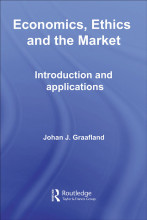Summary: Fif Reader Proteins 2023
- This + 400k other summaries
- A unique study and practice tool
- Never study anything twice again
- Get the grades you hope for
- 100% sure, 100% understanding
Read the summary and the most important questions on FIF Reader Proteins 2023
-
1 1 Introduction to protein ingredients
This is a preview. There are 51 more flashcards available for chapter 1
Show more cards here -
What are the main attributes and typical forms of protein ingredients used in food technology?
- Protein ingredients mainly serve as technological functional additives in food production.
- They are typically powdered substances, commonly obtained through spray drying.
- Common examples include whey protein isolate, soy protein hydrolysates, egg albumin protein powder, milk powder, and pea protein powder. -
What are the sources of protein ingredients mentioned in the text?
- Grains like wheat
- Oilseeds like soybean
- Legumes such as beans and pulses
- Meat
- Milk
- Eggs
- Whey proteins
- Defatted soybean press cake -
What are the steps involved in making a classic meringue dessert and how can foam formation in other culinary contexts be compared to it?
- Separate egg whites and whisk them until stiff peaks form to create meringue.
- Cereal crops like wheat are grown in fields; wheat flour is a common meringue ingredient.
- Beer's foam resembles meringue's airiness, resulting from carbonation.
- Meringue can be paired with desserts like cakes, adding texture and flavor contrast. -
How can protein isolates and concentrates be used as ingredients in food according to food technologists?
- Cereal and legume proteins used in processed meat products
- Milk proteins used in soups and sauces
- Suitable for meat, fish, and milk substitutes -
What food products are mentioned in Figure 3 as examples of foamed products?
- Beer
- Ice cream -
Describe the visual content related to food products provided in the set of materials.
- Several white and purplish bulbs of garlic are shown with some of their papery skin peeled back.
- An assortment of bread and grain products is depicted, including slices of bread, whole loaves, and a bowl of grains or cereal.
- A packaged meat product labeled with "TQM", indicating a brand or company, possibly turkey meat with the label "medallones" suggesting it is sliced or portioned.
- Two black trays or containers are present, typically used for food packaging or serving, and their sizes are different. -
What is the source of the proteins that stabilize the foam structure in the mentioned foamed food products?
- Beer: derived from malted barley, wheat, maize, and rice
- Ice cream: from dairy sources like milk and cream -
What nutrients are primarily found in the citrus fruit shown and what are their health benefits?
- Citrus fruits like the one shown are rich in vitamin C which supports the immune system and skin health.
- They contain flavonoids that have antioxidant properties and may improve heart health.
- High in fiber, which can aid in digestion and help maintain blood sugar levels.
- Provide potassium, essential for heart function and muscle contractions. -
What type of food is shown and what might be the main ingredient used in its preparation?
- The food shown is a type of bread, particularly resembling toast.
- The main ingredient used in its preparation is likely to be wheat flour, which is the standard base for most bread products. -
What is the aim of the chapter on proteins as functional food ingredients?
- Provide insight into the differences in production methods
- Explain resulting changes in protein ingredient properties
- Describe their functionality in the final food product
- Higher grades + faster learning
- Never study anything twice
- 100% sure, 100% understanding
































